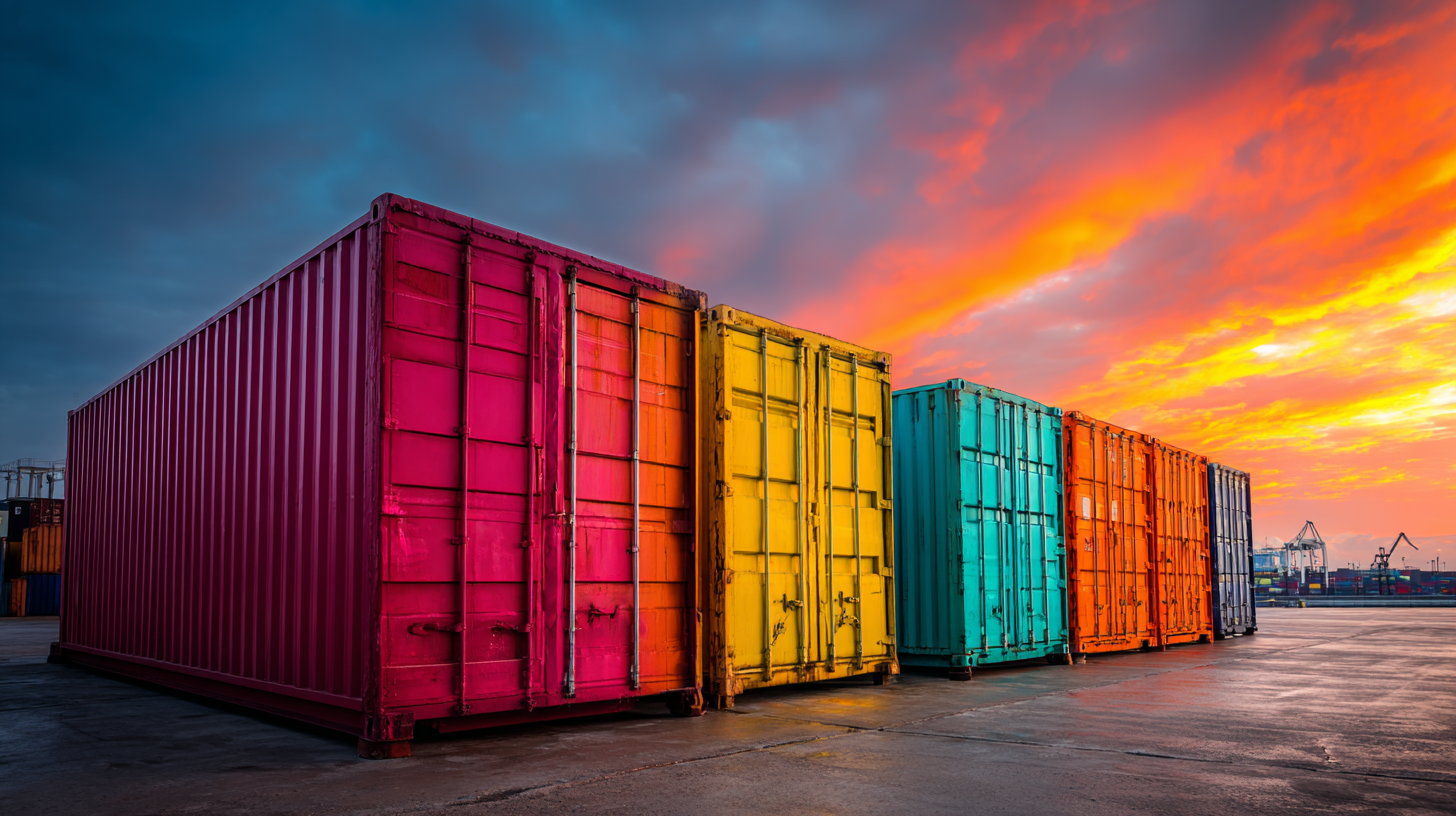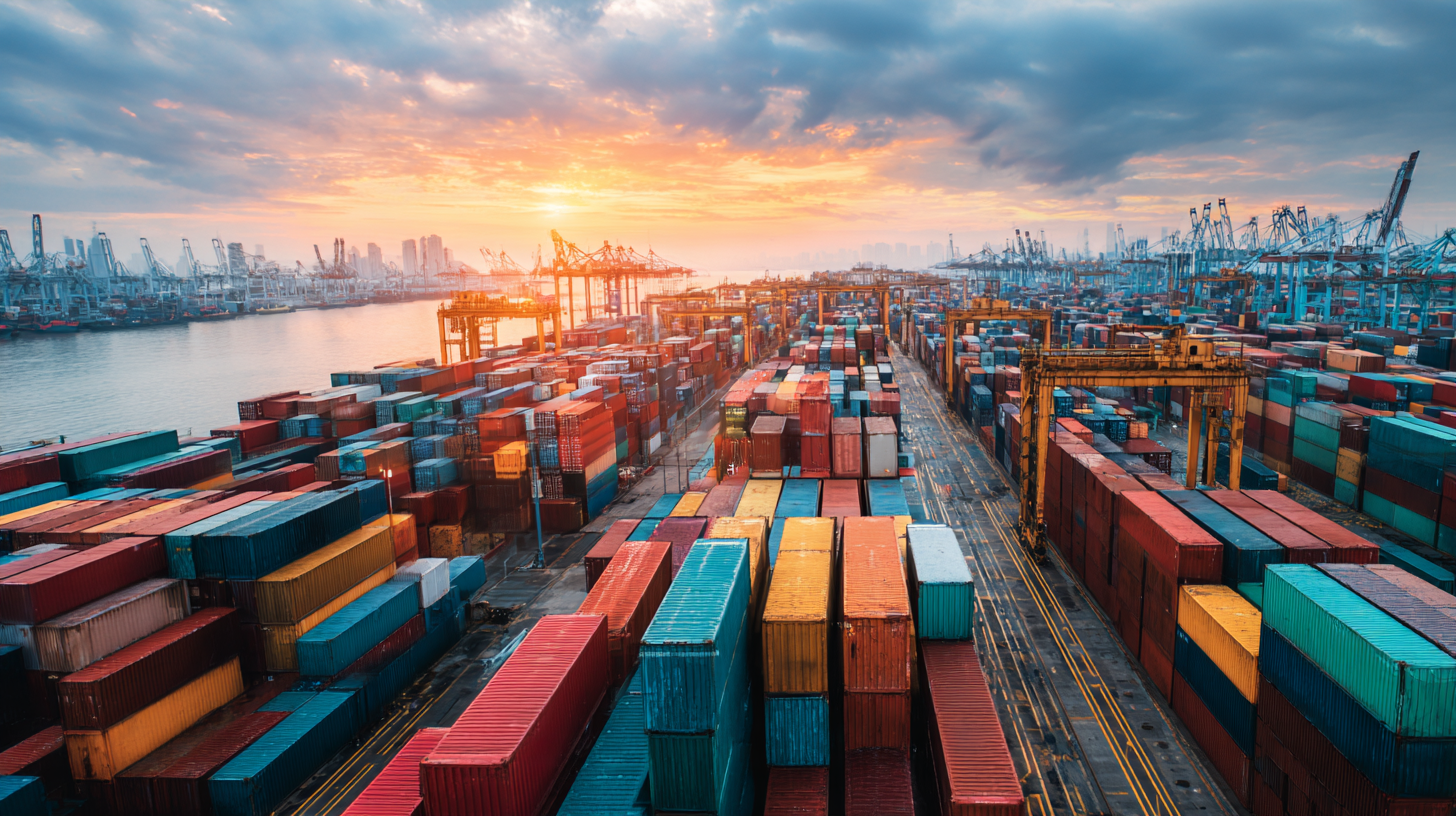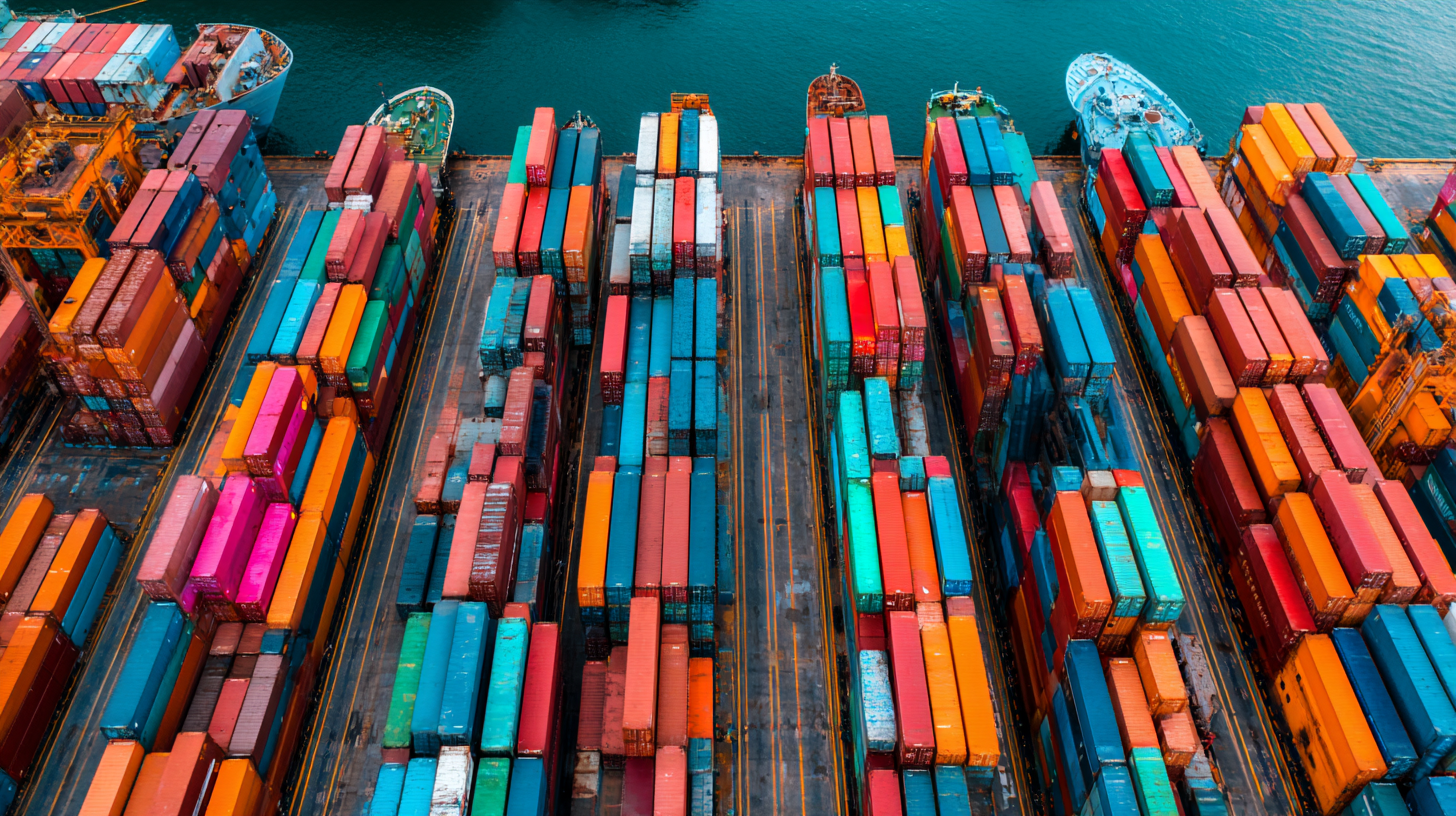The logistics and shipping industry is on the brink of transformation, spearheaded by advancements in technology and changing consumer demands. As we look towards 2025, understanding the benefits of various types of shipping containers becomes paramount for businesses aiming to optimize their shipping operations. Shipping containers, once simple steel boxes, have evolved into multifaceted assets that can significantly enhance supply chain efficiency. This blog explores the emerging trends and innovations within the shipping container market, highlighting their impact on industry growth. By delving into the advantages offered by different container types, we aim to provide valuable insights for businesses and stakeholders looking to stay ahead in this dynamic landscape. Whether considering cost-effectiveness, durability, or sustainability, the right shipping container can provide a competitive edge, making this an essential topic for anyone involved in the global trade ecosystem.

Shipping containers play a crucial role in the global logistics industry, and understanding their unique features and applications is essential for efficient transportation. There are several types of shipping containers, including standard dry containers, refrigerated containers (reefer), flat rack containers, and open-top containers. According to a report by Future Market Insights, the demand for specialized containers, such as tank containers for liquids and high cube containers for oversized cargo, will grow significantly, with an expected compound annual growth rate (CAGR) of over 5% by 2025.
Standard dry containers are the most commonly used, suitable for a wide range of goods. Refrigerated containers, vital for transporting temperature-sensitive products, are projected to see a surge in application as the global food supply chain expands. The latest industry data indicates a robust increase in the market for reefer containers, with a forecasted revenue growth of 7% annually. Meanwhile, flat rack and open-top containers have been gaining traction in sectors that require the shipment of heavy machinery or tall cargo, driving innovation in container design and usage. As shipping needs evolve, understanding these container types will be key for businesses aiming to optimize their logistics strategies.

The shipping container industry is on the cusp of groundbreaking changes as innovative alternatives emerge to address the evolving needs of global trade. With environmental concerns and efficiency demands shaping the market, new materials and designs are being developed to enhance the sustainability and functionality of shipping containers. For instance, a shift towards biodegradable and recyclable materials is gaining traction, aiming to reduce the carbon footprint associated with traditional steel containers.
In addition to material innovations, technology integration is revolutionizing container design. Smart containers equipped with IoT devices are being introduced, offering real-time tracking and monitoring of cargo conditions. This not only improves the efficiency of supply chains but also ensures the safety and integrity of goods during transit. As these emerging alternatives gain acceptance, they are likely to set new standards in the shipping industry, paving the way for a more sustainable and efficient future. The landscape of shipping containers in 2025 will reflect these advancements, showcasing a commitment to innovation and responsible trade practices.
The shipping container industry is poised for significant growth by 2025, driven by increasing global trade and advancements in logistics technology. As businesses expand their reach internationally, the demand for high-quality shipping containers will escalate. Companies are expected to diversify their container offerings, including refrigerated units and specialized containers, to meet varying consumer needs, thus enhancing their market presence.
Tips for businesses looking to capitalize on this trend include investing in durable and eco-friendly materials for container production. Sustainable practices not only attract environmentally conscious consumers but can also reduce costs in the long term. Additionally, embracing smart technology in shipping containers, such as IoT devices for real-time tracking, will provide businesses with greater efficiency and transparency in their operations.
Furthermore, understanding regional market dynamics is crucial. Businesses should tailor their strategies based on regional demand and regulatory environments to gain a competitive edge. Engaging in partnerships with logistics providers can also streamline shipping processes and improve service quality, ultimately driving growth in container demand.
In the evolving landscape of shipping containers, sustainability has become a focal point, reflecting the broader trend of eco-friendly practices in various industries. Modern shipping containers are not just mere tools for transport; they are increasingly viewed as sustainable alternatives in architecture and design. Projects like shipping container homes in Dallas and Detroit highlight how these structures can meet housing demands while minimizing environmental impact. These innovative designs not only offer a stylish aesthetic but also leverage recycled materials, promoting a lifestyle that aligns with modern sustainability goals.

Moreover, the rise of shipping container hotels worldwide exemplifies how the travel industry is embracing eco-friendly solutions. These hotels provide budget-friendly accommodations, appealing to environmentally conscious travelers seeking unique experiences. As consumer preferences shift towards reducing waste and opting for products with reusable packaging, the shipping container's role is set to expand. By incorporating sustainable practices, the shipping container industry is not just transforming itself but also paving the way for responsible consumption in our ever-evolving world.
As the shipping industry continues to evolve, regulatory impacts are reshaping the design and usage of shipping containers, paving the way for significant changes by 2025. Stricter environmental regulations are pushing manufacturers to adopt greener practices and materials. This shift not only focuses on the reduction of carbon footprints but also emphasizes the recycling and sustainability of shipping containers. Expect to see an increase in the production of eco-friendly containers that meet these new standards while maintaining durability and efficiency.
Furthermore, safety regulations are becoming more stringent, necessitating the innovation of design features that enhance the security and stability of cargo. Advanced technologies, such as IoT sensors for real-time tracking and monitoring of container conditions, are likely to gain traction to comply with these standards and improve operational efficiency. As these regulatory frameworks take hold, companies that adapt to these changes will position themselves for growth in the competitive shipping landscape, ensuring compliance while meeting the demands of their customers.
| Dimension | Projected Growth Rate (2025) | Regulatory Impact | Design Innovations |
|---|---|---|---|
| Standard Shipping Containers | 4% CAGR | Stricter environmental regulations | Enhanced insulation and ventilation |
| Refrigerated Containers | 5.5% CAGR | Safety and hygiene standards | Smart temperature control |
| Flat Rack Containers | 3% CAGR | Import/export monitoring compliance | Modular design for flexibility |
| High Cube Containers | 4.2% CAGR | Weight regulations for cargo | Incorporation of renewable materials |
| Tank Containers | 6% CAGR | Chemical transport regulations | Advanced safety features |
Rob was always very honest and upfront about everything and took the time to explain everything I needed.
“highly recommended. They provided us with a great storage container with ontime services.”
“Bought a used container, its perfect, no leaks and in good condition.”
“Good service and prompt delivery. A great option for temporary storage at a decent price.”
Join our mailing list to get the latest storage container inventory and offers